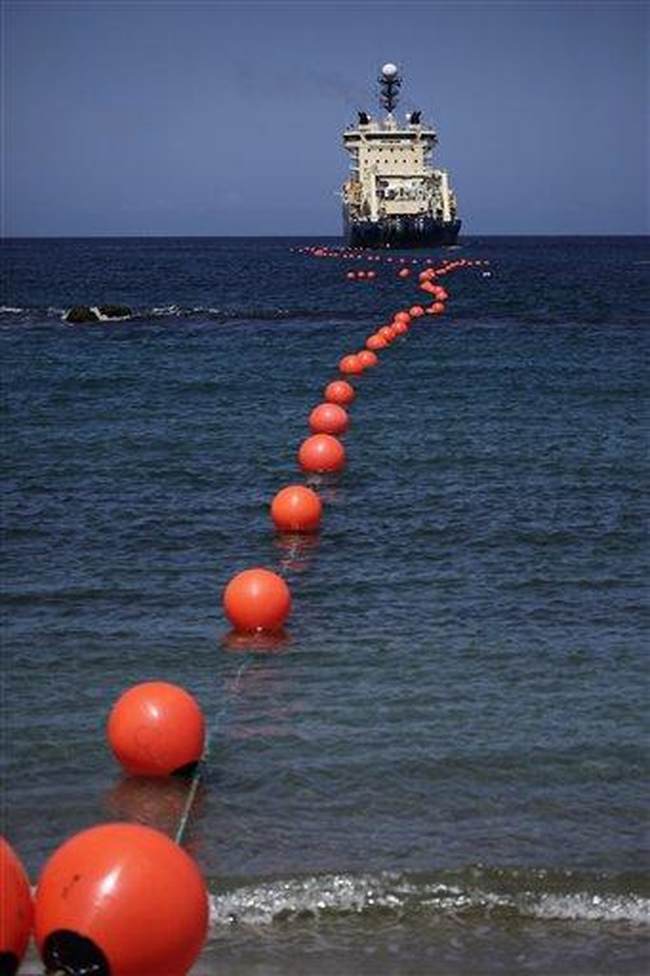We support our Publishers and Content Creators. You can view this story on their website by CLICKING HERE.

Yesterday we learned that two undersea data cables stretched out on the bottom of the Baltic Sea had been severed, likely by sabotage. A cable connecting Sweden to Lithuania was severed early Sunday morning and about a day later a cable connecting Finland to Germany was also severed.
Advertisement
No one was pointing fingers yesterday because the cables hadn’t even been examined, but the general thought was that Russia was likely responsible. In fact, the US had warned just a couple months ago that Russia seemed to be preparing these attacks using a fleet of spy ships.
Today, Germany’s defense minister confirmed this was an act of sabotage aimed at European countries supporting Ukraine, though he still held back from directly blaming Russia.
“Nobody believes that these cables were severed by accident,” Germany’s minister of defense, Boris Pistorius, told reporters ahead of a meeting of European security officials in Brussels.
He did not believe that either of the cables could have been damaged by ships accidentally dropping their anchors. “Therefore we must state — without concrete knowledge of who was responsible — that this was a hybrid action,” he said. “And we must assume, without being certain, that this was sabotage.”
However, another story that made the rounds last week is taking on some new significance in light of the sabotage this week. This happened last Friday in the Irish Sea.
A Russian spy ship has been escorted out of the Irish Sea after it entered Irish-controlled waters and patrolled an area containing critical energy and internet submarine pipelines and cables.
It was spotted on Thursday east of Dublin and south-west of the Isle of Man but Norwegian, US, French and British navy and air defence services initially observed it accompanying a Russian warship, the Admiral Golovko, through the English channel last weekend…
The ship was also spotted on Monday and Tuesday west of Cork, where there are another set of connectors between Ireland and France, some offering transatlantic interconnection.
Advertisement
This particular ship is not part of Russia’s Navy but is classified as an undersea research vessel. It includes two submersibles capable of reaching undersea cables. The same ship had previously been part of a group of three Russian ships seen in the English channel. One of the three split off and headed to the Baltic Sea.
The Daily Mail reports that the tracking of these Russian spy ships would likely have involved a US or British submarine.
According to security sources, it is likely either a US or British submarine would also have been tasked to monitor her movements, and be alert to any bid by her 60-man crew to reach the cables.
UK security sources said the Yantar wanted to send a chilling message to Britain regarding the vulnerability of its undersea cables and pipelines.
One described her presence as ‘dangerous’ and said she is gathering intel, ‘most likely to assess the vulnerability of the cables’.
Maybe they were just spying or maybe the were planning to cut another undersea cable last week but were prevented from doing so by all of the attention from the UK military. When it didn’t work out, they moved to the Baltic where the sabotage was successful.
It will take a week or two to repair the damaged undersea cables. It could take longer to identify who was responsible. When that happens, Russia will act shocked by the allegation and deny everything. But they are sending a message and the message is clear. The cables are vulnerable to Russian sabotage as are US and European airliners which Russia has also been experimenting with sabotaging lately.
Advertisement
For all the nuclear saber rattling Russia is doing, what they are actually likely to engage in are these acts of “hybrid warfare” that target NATO members under a thin veneer of plausible deniability.

 Conservative
Conservative  Search
Search Trending
Trending Current News
Current News 







